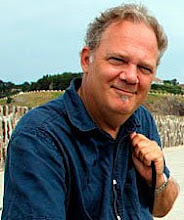Travel Vandals Invading Venice
Venice illustrates some of the complicated political and economic issues involved in tourism. The city receives 16.5 million tourists a year, most of whom shuffle down the main route from St Mark's Square to the Rialto Bridge. The latest plague there is the cruise ships. Forbe's Anna Somers writes in the latest issue.
"They come through the deep-water channel that has been carved across the lagoon and is one of the reasons why this is turning from shallow water in to something closer to open sea conditions. This contributes to the flooding that is undermining the survival of the city, but the town council dares not close the Port of Venice to big ships for the jobs that would be lost.
These cruise ships disgorge hundreds upon hundreds of tourists, most of whom go to Saint Mark's Square and feed the pigeons, a not so minor ecological problem in itself. Venice cannot take this number of people, let alone any increase, and remain tolerable for the permanent residents, and so the population goes down, year on year: from 150,000 in the 1960s to 60,000 today.
The easy money from the visitors has corrupted the locals to the extent that they even serve up bad food in the restaurants--something that goes against every Italian's natural instinct--because they have learned to despise their clients. After all, what does it matter if somebody complains; there are plenty more to take his place. And so the city dies, spiritually and physically.
A gorilla-tracking permit in Uganda costs $250, which has led to gorillas being treated with much more respect by the locals, quite apart from the revenue generated. In West Virginia, a white-water rafting tax is collected from everyone who goes on commercial rafting expeditions. The fee goes to studying the ecological effect of the rafting and cleaning up the river banks several times a year.
There should be a charge to visit Venice, although with the same kinds of concessions that museums give to students and the old. Through imposing or withholding charges, you could encourage tourists to go off the beaten track and thus spread the numbers around. It should be cheaper, for example, to visit the whole of the Louvre, but without the Mona Lisa, than to see just the Mona Lisa. If it is free to visit Bologna, a wonderful town of medieval towers, great art and the best food in Italy, but which has never been on the Grand Tour circuit, then the busloads may decide to go there rather than Florence, where a charge should again be levied.
Lastly, tourists should better educate themselves about where they are going, so that they respect it more and get more out of it. Slower, better informed travel, with the readiness to put something back in the way of direct contribution to improving and protecting the experience is the way to be a tourist."
"They come through the deep-water channel that has been carved across the lagoon and is one of the reasons why this is turning from shallow water in to something closer to open sea conditions. This contributes to the flooding that is undermining the survival of the city, but the town council dares not close the Port of Venice to big ships for the jobs that would be lost.
These cruise ships disgorge hundreds upon hundreds of tourists, most of whom go to Saint Mark's Square and feed the pigeons, a not so minor ecological problem in itself. Venice cannot take this number of people, let alone any increase, and remain tolerable for the permanent residents, and so the population goes down, year on year: from 150,000 in the 1960s to 60,000 today.
The easy money from the visitors has corrupted the locals to the extent that they even serve up bad food in the restaurants--something that goes against every Italian's natural instinct--because they have learned to despise their clients. After all, what does it matter if somebody complains; there are plenty more to take his place. And so the city dies, spiritually and physically.
A gorilla-tracking permit in Uganda costs $250, which has led to gorillas being treated with much more respect by the locals, quite apart from the revenue generated. In West Virginia, a white-water rafting tax is collected from everyone who goes on commercial rafting expeditions. The fee goes to studying the ecological effect of the rafting and cleaning up the river banks several times a year.
There should be a charge to visit Venice, although with the same kinds of concessions that museums give to students and the old. Through imposing or withholding charges, you could encourage tourists to go off the beaten track and thus spread the numbers around. It should be cheaper, for example, to visit the whole of the Louvre, but without the Mona Lisa, than to see just the Mona Lisa. If it is free to visit Bologna, a wonderful town of medieval towers, great art and the best food in Italy, but which has never been on the Grand Tour circuit, then the busloads may decide to go there rather than Florence, where a charge should again be levied.
Lastly, tourists should better educate themselves about where they are going, so that they respect it more and get more out of it. Slower, better informed travel, with the readiness to put something back in the way of direct contribution to improving and protecting the experience is the way to be a tourist."



0 Comments:
Post a Comment
<< Home